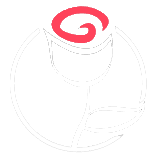Contouring and highlighting have become staple techniques in the world of makeup, allowing individuals to sculpt and enhance their facial features for a flawless, camera-ready look. While these techniques may seem daunting to beginners, mastering the art of contouring and highlighting is achievable with the right guidance and practice. In this comprehensive beginner’s guide, we’ll explore everything you need to know to create a beautifully sculpted and radiant complexion through contouring and highlighting.
Understanding Contouring and Highlighting: Contouring involves using darker shades to create shadows and definition, while highlighting utilizes lighter shades to bring forward and accentuate certain features. Together, these techniques work harmoniously to enhance the natural structure of the face and create dimension.
- Tools and Products: Before diving into contouring and highlighting, it’s essential to gather the right tools and products:
- Contouring: Choose a matte bronzer or contour powder that is a few shades darker than your natural skin tone. Opt for a dense, angled brush for precise application.
- Highlighting: Select a creamy or powder highlighter that complements your skin tone. A small, fluffy brush or a beauty sponge works best for blending.
- Face Mapping: Understanding your facial structure is key to successful contouring and highlighting. Here’s a simple guide to face mapping:
- Contour: Apply darker shades in the areas you want to recede, such as the hollows of the cheeks, temples, jawline, and sides of the nose.
- Highlight: Apply lighter shades to areas you want to bring forward, including the tops of the cheekbones, brow bone, bridge of the nose, cupid’s bow, and center of the forehead.
- Choosing the Right Shades: When selecting contour and highlight shades, consider your skin tone and undertone:
- Contour: Opt for shades that mimic natural shadows. Avoid shades that are too warm or orange-toned, as they can appear unnatural.
- Highlight: Choose shades that complement your skin tone and provide a subtle luminosity without being overly shimmery or glittery.
Step-by-Step Contouring and Highlighting Tutorial: Now that you have the basics down, let’s dive into a step-by-step tutorial for contouring and highlighting:
Step 1: Prep the Skin Start with a clean, moisturized face. Apply a primer to create a smooth canvas for makeup application.
Step 2: Foundation Apply your preferred foundation or tinted moisturizer to even out the skin tone.
Step 3: Contour Using a contour brush, apply the contour shade to the areas you want to sculpt and define. Blend the product upwards and outwards using light, sweeping motions for a seamless finish.
Step 4: Highlight Apply the highlight shade to the high points of the face, such as the tops of the cheekbones, brow bone, and bridge of the nose. Blend carefully to avoid harsh lines.
Step 5: Blend, Blend, Blend The key to natural-looking contouring and highlighting is blending. Use a clean brush or beauty sponge to blend the contour and highlight shades seamlessly into the skin.
Step 6: Set To lock your contour and highlight in place, lightly dust translucent powder over the face using a fluffy brush.
Step 7: Optional: Additional Definition For added dimension, you can further define certain features using additional contour or highlight shades. For example, you can contour the sides of the nose for a slimmer appearance or highlight the inner corners of the eyes to make them appear more awake.
Conclusion: Contouring and highlighting are powerful techniques that can transform your makeup look and enhance your natural beauty. With the right tools, products, and techniques, anyone can master the art of contouring and highlighting. Remember to practice patience and experiment with different shades and placements to find what works best for your unique facial structure. Whether you’re getting ready for a special occasion or simply want to elevate your everyday makeup routine, contouring and highlighting are sure to become essential skills in your beauty arsenal.


